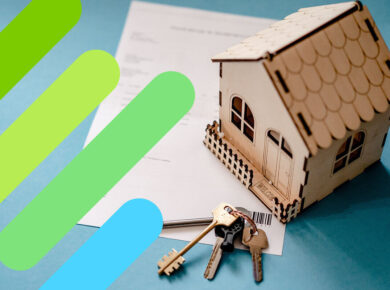Finding the best secured credit cards is a crucial first step in your personal finance journey
Trying to build or rebuild your credit score? It can feel like a frustrating loop: you need a good credit history to get a loan or a credit card, but you can’t build a history without having one. This is where secured credit cards come in. They are one of the most effective tools for establishing credit from scratch or repairing a damaged score. But not all are created equal. Finding the best secured credit cards is a crucial first step in your personal finance journey. Let’s break down what they are, how they work, and what to look for.
What Exactly Is a Secured Credit Card?
Think of a secured credit card as a regular credit card with training wheels. The “secured” part means you provide a refundable security deposit to the card issuer (usually a bank or credit union). This deposit is typically equal to your credit limit. For example, a $200 deposit gets you a $200 credit limit.
This deposit protects the lender. If you fail to pay your bill, they can use your deposit to cover the loss. Because their risk is so low, they are much more willing to approve applicants with no credit or poor credit. You still have to pay your bill every month, just like a regular credit card. When you eventually close the account in good standing or “graduate” to a regular card, you get your deposit back.
Who Should Get a Secured Credit Card?
Secured cards are designed for a specific group of people:
- The Credit Beginner: If you’re 18 or older and have never had a credit card or loan (like many students or young adults), a secured card is a fantastic way to build a positive credit file.
- The Rebuilder: If you’ve had financial trouble in the past—like missed payments, collections, or even bankruptcy—a secured card gives you a second chance to prove your creditworthiness.
- The New Resident: Individuals new to the U.S. often have no domestic credit history, even if they had good credit in their home country. A secured card is one of the quickest ways to establish a U.S. credit score.
How to Find the Best Secured Credit Cards
When you’re comparing options, the “best” card isn’t about fancy travel perks. It’s about finding the cheapest, most effective tool for the job. Here’s your checklist.
1. Look for No Annual Fee
Many of the best secured credit cards have no annual fee. Since your goal is to build credit, not to spend money, avoid cards that charge you $25, $50, or more per year just for having them. There are plenty of great $0 annual fee options available.
2. Does It Report to All Three Credit Bureaus?
This is the most important feature. The whole point is to build a credit history. That history is stored in files at the three major credit bureaus: Equifax, Experian, and TransUnion. If a card only reports to one or two (or none!), it’s not doing its job. Any good secured card will report your payment history to all three.
3. Is There an “Upgrade Path”?
The best secured credit cards have a clear path to “graduate” to a regular, unsecured card. This means that after 6-12 months of responsible use, the card issuer will review your account. If you’ve been paying on time, they may automatically refund your deposit and convert your card to an unsecured version. This is ideal because it’s seamless and you keep the same account, which helps the “age” of your credit history.
4. Check the Security Deposit and APR
Most secured cards require a minimum deposit of $200. Some offer more flexibility, allowing you to deposit more for a higher credit limit. Also, check the APR (Annual Percentage Rate). While you should always plan to pay your bill in full every month to avoid interest, secured cards often have high APRs. It’s good to know what it is, just in case.
Key Steps to Using Your Secured Card Wisely
Getting the card is just the first step. How you use it is what actually builds your credit. This is a core part of your overall money management plan.
- Make 100% of Your Payments on Time: This is the single most important factor in your credit score. Even one late payment can set you back. Set up automatic payments for at least the minimum amount.
- Keep Your Balance Low: Don’t max out your card. A good rule of thumb is to keep your “credit utilization” (the amount you owe divided by your credit limit) below 30%. Below 10% is even better. On a $200 limit, this means spending no more than $60 ($20 is even better) before you pay it off.
- Pay in Full Each Month: While you only have to pay the minimum, you should always pay the full statement balance each month. This ensures you never pay a penny in interest and proves you can manage your finances responsibly. This is a great habit to learn if you want to avoid debt in the long run.
Your First Step to a Better Credit Future
A secured credit card is a powerful tool, not a trap. It’s a temporary stepping stone designed to get you to the next level of your financial life. The best secured credit cards are the ones with no annual fee, a clear upgrade path, and, most importantly, a commitment to reporting your good habits to all three credit bureaus. Use it wisely, be patient, and you’ll be on your way to a healthier credit score before you know it.
Disclaimer: This article is for informational purposes only and does not constitute financial or legal advice. The content is not intended to be a substitute for professional financial advice. Always consult with a qualified professional before making any financial decisions.






